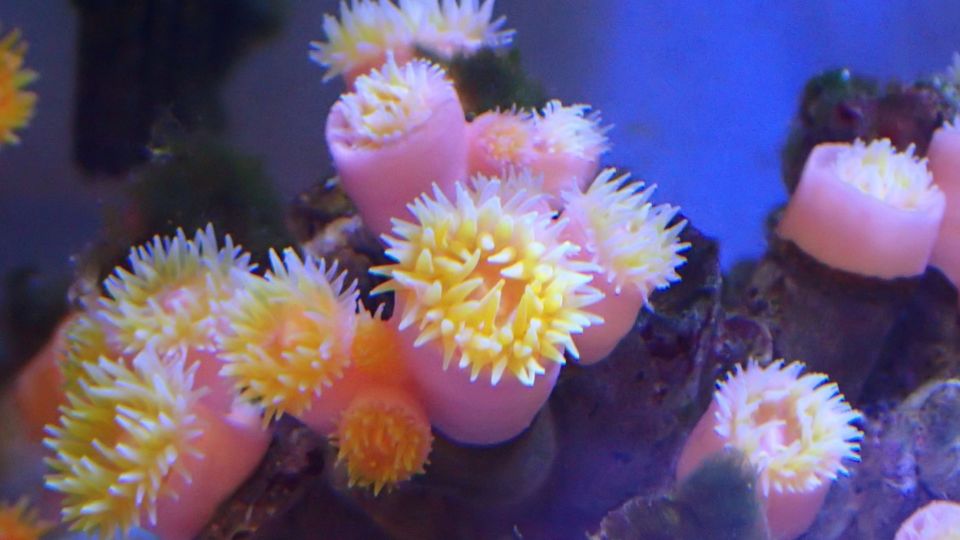Biologists from Hong Kong Baptist University have discovered three new species of coral in the city’s waters.
The new marine species are hard corals — meaning they have hard calcium carbonate skeletons — and have not been identified anywhere else in the world.
The university said in a press release issued on Thursday that the new species were discovered by Professor Qiu Jianwen and MPhil student Yiu King-fung from its department of biology and their findings have been accepted for publication in academic journal Zoological Studies.
The team dubbed the three species Tubastraea dendroida, Tubastraea chloromura and Tubastraea violacea. They all belong to the Tubastraea genus, more commonly known as sun corals.
Similar to most sun corals, Tubastraea dendroida has a bright orange color.
Instead of growing in clumps like most of its related species, this new species has a tree-like structure, with the main stem of its colony attenuating from the base to the tip. The team therefore named it dendroida to reflect its tree-shaped body.
Covered with a thin layer of pale purple tissue on the corallites (skeletal cups), Tubastraea violacea stands out from other related sun coral species as its polyp wall tissues and skeleton are violet. Its tentacles are yellow and the corallites have a thick wall.
Based on comparisons with DNA sequences in public databases, the team found that this species may have color variants elsewhere, such as a yellow color variant in New Caledonia in the South Pacific.
The final species is the Tubastraea chloromura, which has a delicate olive green skeletal wall and a circle of yellow tentacles surrounding its mouth. As a result, the species has been named chloromura, with chloro and murus meaning “green” and “wall” respectively.
Based on coral gene sequences recorded in public databases, the university’s biologists envisage the potential distribution of Tubastraea dendroida and Tubastraea violacea in Japan and the Western Pacific Ocean. However, at this stage, Tubastraea chloromura is only known to inhabit Hong Kong waters.
All of these three coral species are non-reef-building corals. They do not host symbiotic algae, which produce nutrients and energy via photosynthesis.
Living in waters at depths of between 10 and 30 meters, they gain energy and nutrients by capturing zooplankton from seawater using their tentacles.
“Our discovery of three new species of Tubastraea enhances our knowledge of the diversity of this sun coral genus. Given that corals are one of the best-studied marine animals, our study reveals how little we know about marine diversity and how many undescribed species are still awaiting our discovery,” said Qiu.
“The discovery is very encouraging as it provides strong evidence of the high marine biodiversity in Hong Kong waters… It also inspires us to further explore the diversity of marine animals, study their functions and ecosystem services, and protect them from potential human disturbances.”
The samples were collected when the team surveyed coral-eating nudibranchs, a shell-less marine mollusc, at Sung Kong and Waglan Island in the eastern waters of Hong Kong.
With the addition of the new members, the number of known species in the Tubastraea genus has increased from seven to 10.





